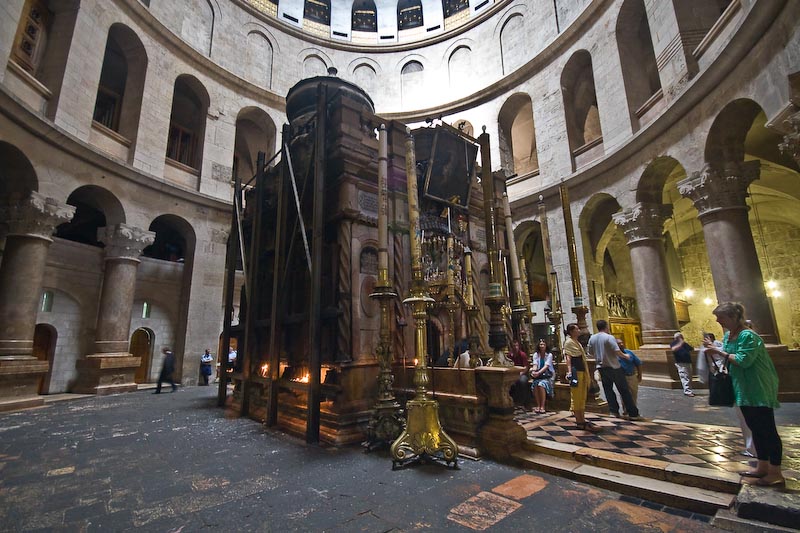Disintegration of Historic Landmarks
picture used with respect to the creative commons license (http://albertdebruijn.com/home/wp-content/uploads/2008/09/tomb-of-christ.jpg)
“London bridge is falling down, falling down, falling down, London bridge is falling down, my fair lady.” While the song may not hold true for the bridge itself, other national landmarks are following suit. Our national landmarks have stood the test of time for centuries but recently, several of these wonders have been the cause of worry for scientists.
These ancient relics have recently been under attack by none other than mother nature and father time. One such relic is the Edicule. Scientists have recently discovered that the Tomb of Christ is sitting in a precarious situation, the ornate shrine known as the Edicule encloses what is believed to be the tomb of Jesus Christ inside the Church of the Holy Sepulchre in Jerusalem.
The tomb has undergone a year-long renovation to reinforce the bowing walls of the Edicule, re-anchoring columns with titanium rods and re-grouting layers of masonry that have spanned centuries. The reconstruction team now believes that more renovations are needed to secure the building’s structure and to avoid a colossal internal collapse.
A large part of this unsettling, unstable position is because of the massive network of tunnels that span 3,000-square-feet under the Little House, making its foundation weak. Coupled with a bed of loose sediment underneath it, these factors could cause the entire building to give way and crumble into the surrounding tunnels.
The faulty foundation is hardly the only problem; other unexplained tunnels and voids run directly underneath and around the Edicule. Not to mention, there is an eight-foot-deep archaeological trench that was dug just south of the shrine in the 1960s. The trench sits beneath an unsupported concrete slab in an area where visitors line up to enter the tomb. The foundation and the structure’s integrity are at risk as well, with several of the 22-ton pillars that hold up the dome of the rotunda resting on more than four feet of unconsolidated rubble.
In order to address the risk of structural collapse at Christianity’s holiest site, the NTUA has now proposed a 10-month, six-million-euro project that will involve removing the fractured stone paving that surrounds the Edicule,new grouting of foundation rubble and degraded mortar, and excavating more than 1,000 square feet of floor to install new sewage and rainwater drainage around the perimeter of the rotunda.
The deterioration of iconic monuments has been a problem for centuries because most ancient buildings and monuments contain florescences reminiscent of their time period. Scientists have clarified that the “evaporation of water at the surface tends to accumulate the fluorescences in subsurface regions of the stone; their migration is facilitated by increased ionic concentration resulting from atmospheric pollution. Repeated dissolution and crystallization of the fluorescences in subsurface regions and the accelerated oxidation of reinforcing metals generate stresses which disintegrate the stone.” (http://link.springer.com/chapter/10.1007%2F978-1-4613-3060-8_7).
Despite the length and invasive reconstruction, the Edicule is undertaking at the moment it is hardly the first time the Edicule has been reconstructed over its long life. The tomb is, unfortunately, no stranger to devastation and reconstruction; it was built by Constantine, the tomb was partly destroyed by Persian invaders in the seventh century A.D. and destroyed again by the Fatimids in 1009. The church was later returned to its former glory in the mid-11th century, and then again, was altered by the Crusaders and finally restored again in the 16th and early 19th century. It has been brought to light that some Christians believe the country’s government is to blame for the monuments disintegrated state because they refuse to fund projects protecting the landmarks from “wear and tear”. What do you believe, should it be the government’s job to ensure that the monuments are kept in perfect condition, or should it remain private companies’ jobs to do so?

Hello! My name is Katlyn Blacksten, or "Kat" to those who know me. The girls Varsity Basketball team is to blame for that because when I first tried out,...














Carter Rodny • Apr 17, 2017 at 12:50 pm
How do they plan to fund the reconstruction?
Bethany Diaz • Apr 17, 2017 at 12:06 pm
It makes sense that they would crumble since they are so old, I’m glad that we are doing something to save these important historical sites and buildings.
Jake Werner • Apr 17, 2017 at 12:02 pm
It’s a shame that history is literally dissolving away. Hopefully something will happen to help these monuments and artifacts stay intact.
Anna Cloonan • Apr 17, 2017 at 11:58 am
So sad and disappointing I would have never thought that these special landmarks would fall